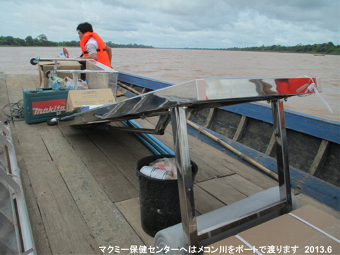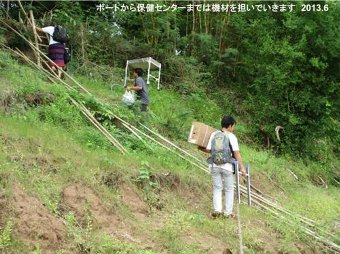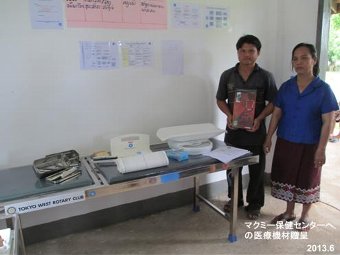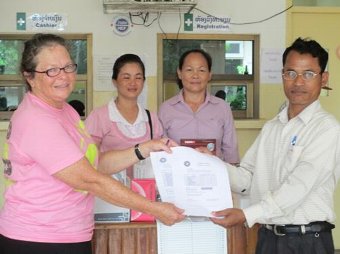
In Japan, a sick child is commonly seen in a medical facility. As stated in Report 3, however, most health centers in the rural areas of Laos have no doctor, and even district hospitals are short of doctors though they must serve as a core of medical care. These areas have very limited medical staff well-informed with pediatric care. Our activities have revealed that it is crucial to ensure accurate weight check required for the observation of children’s healthy growth, and basic practices such as hand-wash and disinfection for the prevention of in-hospital infection. In addition to a lack of knowledge, children are mostly provided care with medical materials of adult size when they need the right size for a child.

In this project, we provide such health centers and hospitals with children’s medical materials at minimum level, depending on each facility, and attempt to give them instructions for use, management and maintenance. In particular, we started researching the medical material shortage status at each facility last year, and ordered basic equipment for child care which arrived in May this year. In June, we started distributing the medical equipment, along with staff education and supervision of health centers.

On the other hand, for the low-income areas with insufficient medical environment, WHO and UNICEF have developed and disseminated the differential diagnosis method called IMCI, Integrated Management of Childhood Illness, which focuses on leading causes of children’s death. This gradually promotes doctors’ awareness. For example, when we visited one of our partners, the director of Sukuma District Hospital, in December 2012, an examination room exclusively for children was to be prepared. And we found the former Director’s room is now used as the examination room for children. Along with quality of the staff practice, good examination environment should contribute to raise medical staff’s awareness. In June 2013, we distributed medical materials to be installed at this examination room.

The rest of targeted facilities will have also received medical materials by the end of July. Following this, human resource development will start in full swing.
Picture 1.2.3
The medical equipment are being brought into Makmee Health Center. On the same day the MDM medical officer and the district health officer visited as a supervisor, and a presentation ceremony and a brief instruction of use followed. While carrying those materials in, perhaps coincidentally, local patients appeared one after another. Putting their examination, monitoring and advice first, three hours passed quickly.
Picture 4
A presentation ceremony at Sukuma District Hospital. From the right, staff of Sukuma District Hospital, the District Health Office, the Province Health Office, and MDM medical coordinator.
CONTACT
世界の医療団(認定NPO法人)
特定非営利活動法人 メドゥサン・デュ・モンド ジャポン
Médecins du Monde Japan
〒106-0044Médecins du Monde Japan
東京都港区東麻布2-6-10麻布善波ビル2F
TEL : 03-3585-6436
FAX : 03-3560-8073
Laos Pediatric Capacity Development project Report No.4
最新記事
-
©Bakr Al Kasem
2026年 事務局長 米良彰子より新年のご挨拶
OTHER 2026.01.05 -
©MdM
53 International NGOs warn Israel’s recent registration measures will impede critical humanitarian action
PRESS RELEASE 2026.01.05 -
©MdM
53の国際NGOが、イスラエルの最近の登録措置が重要な人道支援活動を妨げると警告
PRESS RELEASE 2026.01.04 -
©MdM
ヨルダン川西岸における「こころのケア」についての報告書を発表
PRESS RELEASE 2025.12.18